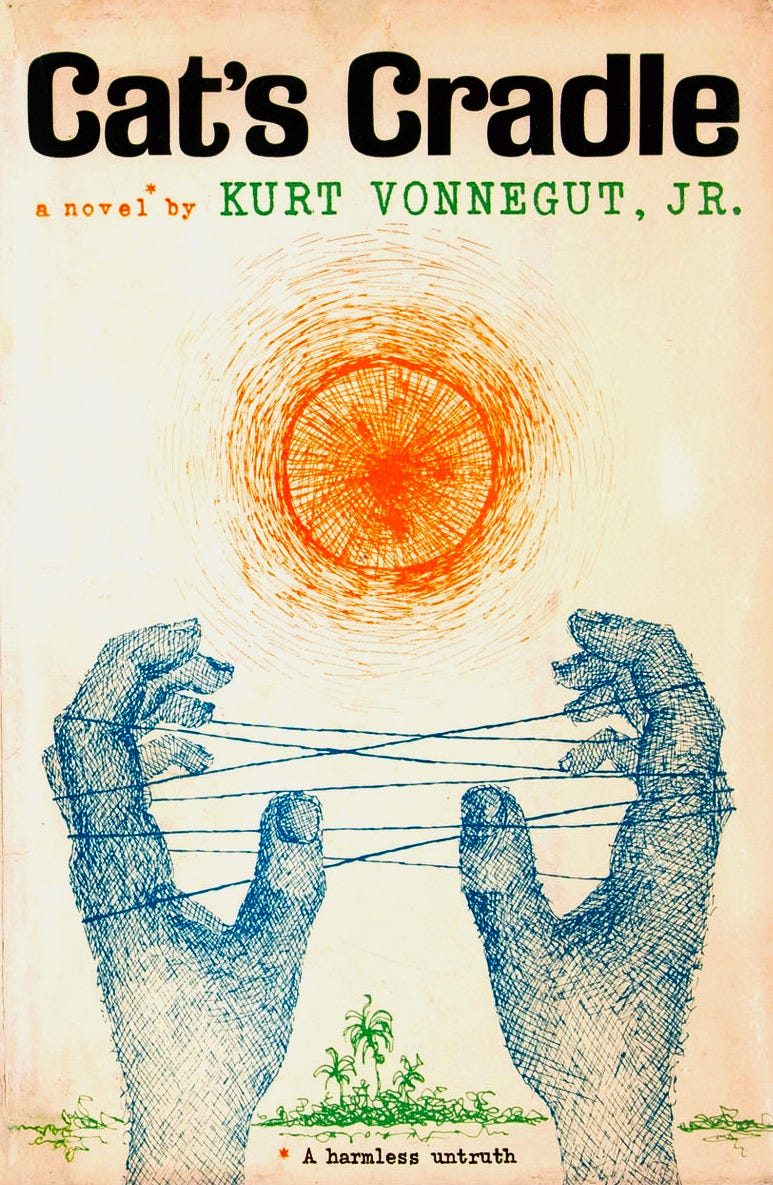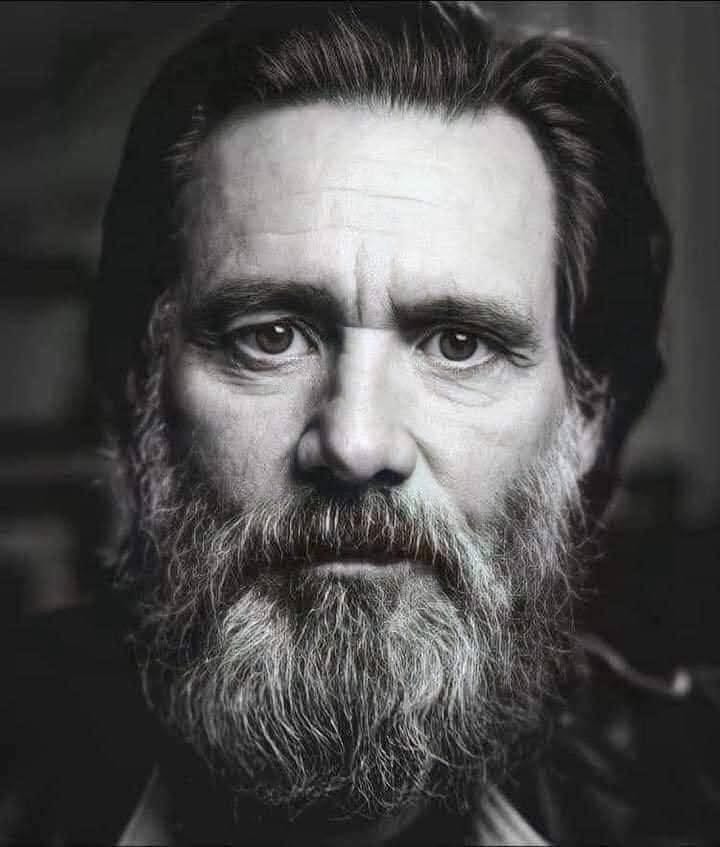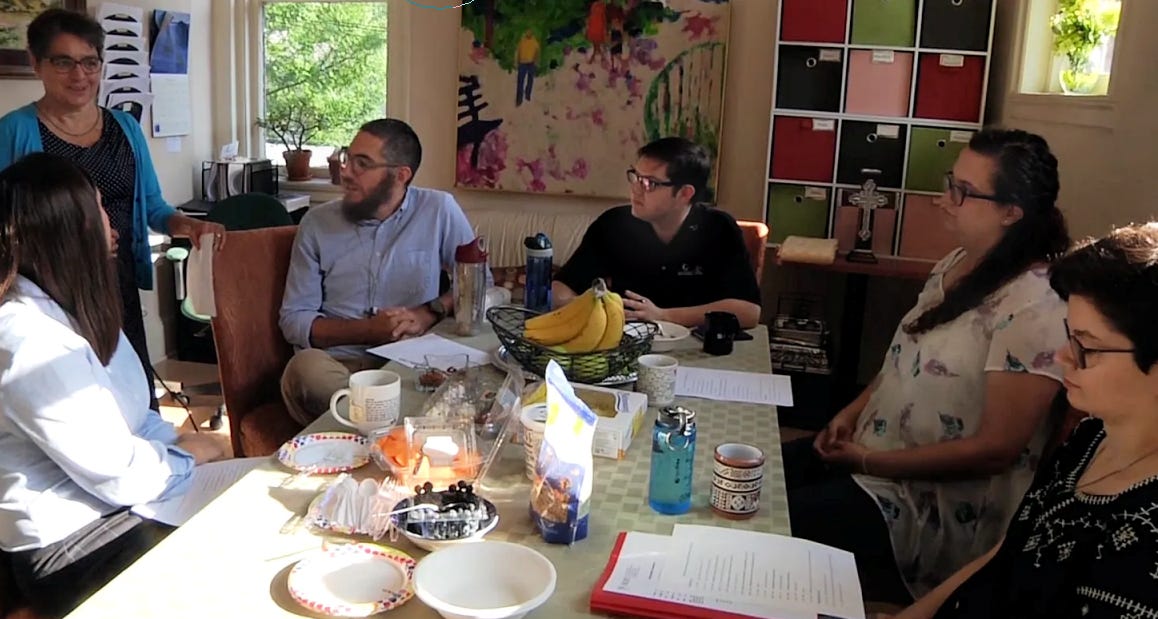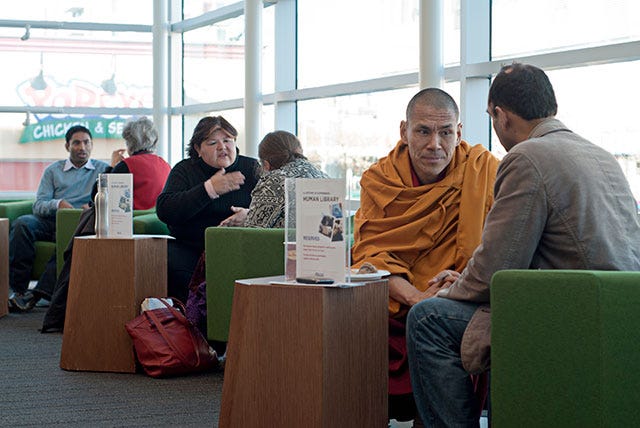The Seven Seas of Bondo II
Can the entirety of human intimacy be distilled onto a pocket card? That was the plan.
I needed a mnemonic device to keep my Bondo focused, so I checked in with the great philosophers:
“Relationship is the fundamental truth of this world of appearance,”
~ Rabindranath Tagore"In human relations one should penetrate to the core of loneliness in each person and speak to that."~ Bertrand Russell
“I–Thou establishes the world of relationship, which asks of each person a participatory intimacy. Thou addresses another not as an object but as a presence…” ~ Martin Buber
“Limbic resonance is a symphony of mutual exchange and internal adaptation whereby two mammals become attuned to each other’s inner states.”
~ A General Theory of Love“My private model for inter-subjectivity, or communication by speech, or conversation, is amoebas having sex.” ~ Ursula Le Guin
Say what? Let’s check in with Henny Youngman:
“Did you hear the one about the amoeba who goes to the strip club? Yeah, the Protozoa Strip Club. And he complains to the dancer, ‘Hey honey, you can do better than that.’”
The unicellular dancer obliges and morphs into a statuesque figure. “You like?’’
Before the amoeba can whip out some cash, she morphs back into a blob.
Disgruntled, the amoeba takes back his money. “Sorry, the thrill is gone.”
“Well,” she scoffs, “You’re not exactly hard, yourself.”
Badda boom.
I’m not sure what Ursula Le Guin was getting at, but my secret desire to write comedy was just fulfilled. More to the point, my need for Bondo was less philosophical and more in line with Sam Baldwin — the Tom Hanks character in Sleepless in Seattle:
Sam: “I just want somebody I can have a decent conversation with over dinner without falling into weepy tears over some movie.”
We all want that someone, but I needed a metric to guide me, like a Bondo blood panel that measures human connection.
Miller’s Law
I found the conveniently named Miller’s Law, developed in 1956 by cognitive psychologist George A. Miller. He discovered that the average person can hold seven items in their memory; his “Magical Number Seven Experiment" might be my ticket to a dinner date and even a partner.
For the next couple months, my therapist friend, Carole Anne, and I sketched out and tested each ingredient in my Bondo panel. While working on this chapter, I called Carole Anne to get her recollection.
BRUCE: I’m writing about the Seven C’s. Remember how excited we were?
CAROLE ANNE: Yes, we co-created! I remember struggling with the word “intimacy,” and how you said, Bondo was different.
BRUCE: I’m still convinced it’s a life force.
CAROLE ANNE: Yes, but as a therapist, a key step in healing from trauma is being able to have intimate relationships. I’m helping clients be themselves with others. If someone feels safe, they can go into any setting, engage their superpower, and have a Bondo experience.
BRUCE: How do you see Bondo playing out beyond the world of romance?
CAROLE ANNE: When I was a police officer, I had to create a genuine connection if I needed to encourage a street person to go to the hospital. If I faked it, they’d see right through me.
BRUCE: So, Bondo applies in the working world?
CAROLE ANNE: Of course. My son works for a Big Three consulting company. He asked me, “What good is Bondo as a superpower if you can't make money off it?’
BRUCE: What did you say?
CAROLE ANNE: I explained how Bondo enlivens your connections and your conversations. If you’re leading a team at work, you want to create a space for the quiet person to share their view. She may unlock the problem.
BRUCE: And that’s why Connection is the first C.
CAROLE ANNE: Exactly.
Here’s our work: The Seven Seas of Bondo
1. Connection
A shared, energetic vibration deepens through face-to-face proximity and time. Connection describes a deep sense of being on the same team. In Bondo, a shared guidance steers the ship so that mutual decisions flow effortlessly.
I was curious about Connection, so I clicked the dating button at the bottom of my Facebook mobile app. I never paid attention to the little heart icon, but it called out, “Click me.” I expected “Welcome to Dating” to appear; instead, the app signed me up.
Suddenly, I was getting “Matched!”
“Hello, Bruce,” Donna typed.
Holy shit. Facebook encouraged me further: “Wondering how to start the conversation?”
Lucky me, Donna had prepared automated hints to connect with her: “The best way to start chatting with me is to 1. Introduce yourself, 2. Ask me a question, 3. Send an icebreaker.
Three more matches popped in. Panicked, I skipped the icebreaker and clicked “Taking a break.”
This takes me to Connection.
The dating geniuses at Meta are trying to nurture connection — digitally. Donna’s entrée was now in my court. If I followed the UX design, the back and forth would deepen into connection.
A study from the University of Kansas wanted to know how long it takes to go from a casual spark to a deep connection. They found it takes time — about 50 hours of socializing to go from acquaintance to casual friend, 90 hours to become a “real” friend, and 200 hours to become a close friend. (That’s 70 dinner dates with Donna, assuming no sleepovers!)1
It’s a ridiculous study, but it reveals how connections deepen with time. The people we call our friends are mostly the people we go through life with. Kurt Vonnegut’s fictional religion, Bokononism, describes these people as your Karass. You don’t sign them up, and you may not realize you’re on a shared mission, but you do share a deep connection — in Vonnegut’s words, “to do God’s work.”
Connection is no laughing matter.
From the Surgeon General:
The physical health consequences of poor or insufficient connection include a 29% increased risk of heart disease, a 32% increased risk of stroke, and a 50% increased risk of developing dementia for older adults. Additionally, a lack of social connection increases the risk of premature death by more than 60%.2
America is late to the table regarding Connection. In 2004, the Blue Zones project sought to understand which lifestyles support the longest-lived people on the planet. They discovered that people living in places like Okinawa, Japan; Sardinia, Italy; Nicoya, Costa Rica; and Ikaria, Greece, live to be over 100 years old. The people of Okinawa belong to moai, social support groups that start in childhood and continue to age 100 or more (sounds like a karass). The newest Blue Zone, Singapore, is actively building an infrastructure that maximizes social connection. Singapore even gives tax breaks if elder parents live with their children.
The common denominator in all Blue Zones is a lifestyle that maximizes face-to-face interaction with friends, relatives, and community.
In a Gallup report, people in 142 countries were asked to rate their "social connectedness" – defined as "how close you feel to people emotionally."3
Seven out of 10 people worldwide, including the US, said they were "very" or "fairly" connected. But Mongolians were the most connected, with 95% reporting feeling connected.
In the traditional Mongolian yurt, a family of two or even 10 may live in one big space. Everyone sleeps on the floor using felt mattresses and cooks together on a single-burner stove.4
According to Polyvagal theory, Mongolian face-time resonates in the ventral branch of the vagus nerve — the part of our nervous system connected to the heart, facial expression, auditory, and vocalization. It supports feeling physically safe and emotionally connected to others without activating “fight or flight,” the chemical response that upsets our equilibrium.
My Bondo dream is to live in Ikaria, Greece, with its Mediterranean diet, stress-free living, midday siesta, and mineral hot springs. Dementia is non-existent in Blue Zone Ikaria, maybe because villagers link arm-in-arm and dance until dawn.
Scientists call this “interbrain synchrony”
Our brain patterns align when we think, feel, and act in response to others. Like two conga players syncing in a drum circle, neurons in two brains also fire simultaneously. More synchrony indicates a stronger relationship, especially between close friends, partners, or an effective teacher and their students.
Neuroscientists observed interbrain synchrony by placing two subjects in brain imaging machines 130 miles apart and asking them to collaborate on a story over the Internet. The fMRI machines tracked changes in blood flow throughout the brain, which correlated tightly with changes in neural activity.
Dartmouth neuroscientist Thalia Wheatley, who worked on the pioneering study, explained to Scientific American,
“When we're talking to each other, we kind of create a single überbrain that isn't reducible to the sum of its parts. Like how oxygen and hydrogen combine to make water, it creates something special that isn't reducible to oxygen and hydrogen independently.”5
“This new kind of brain research might also illuminate why we don't always ‘click’ with someone or why social isolation is so harmful to physical and mental health.”
The fight against isolation
Nearly a year into widowerhood, I began to sense how aloneness was becoming more comfortable and satisfying. I would have to fight against isolation. I stumbled onto a Jim Carrey speech that set things straight:
Loneliness is a seductive trap, a sweet poison that, once tasted, turns into a hard habit to break. Your calmness and peace intertwine around you like a protective cloak, making you forget the whirlwind of human interactions. Over time, the desire to distance yourself from others grows as loneliness drains you, exposes your fragility and separates you from the world.
Loneliness may seem like a refuge, but it's a treacherous illusion that isolates us from true and necessary connections. It's an escape mirror, but deep down we're just losing ourselves and others. ~ Jim Carrey.
2. Conversation
Call and response is a creative force that builds the substance of intimacy. Unlike “communication,” being "in conversation" is always two-way.
My widower year has been hard. In addition to my New Year’s vow to say yes to all invitations, I vowed to be “in conversation” with one new person before the year’s end. It sounds easy enough, but the 200-hour stakes are high.
My requirements were simple: Person A is just as likely to reach out to Person B as B to A. I know you’re thinking, “You could be ice-breaking with Donna by now,” but given a choice between algorithm and organic life, I chose the latter.
Think of all the people you have running conversations with: A co-worker, best friend, sibling, your mom. Being in conversation means you can always pick up where you left off and don’t have to pre-schedule a call by text. Just pick up the phone and dial.
Conversation differs from communication.
Communication can be one-way, but conversation always unfolds as call-and-response. The roots of call and response go back to gospel and blues, the “field hollers” on the Southern plantations, and the rhythms of Africa. My Sufi teacher expanded it to “living in the question” — to constantly prod your growing edge to see if an echo comes back.
Joseph Campbell found an element of risk in call and response — especially between you and God:
I have found that you only have to take that one step toward the gods, and they will then take ten steps toward you. That step, the heroic first step… often must be taken before you know that you will be supported. ~ Joseph Campbell6
Emily Post warned about one-way communication in 1922:
“Ideal conversation should be a matter of equal give and take, but the man who has been led to believe that he is a brilliant and interesting talker has been led to make himself a rapacious pest.”
Emily Post was hinting at reverse charisma, the magnetic quality of making others feel respected and important by being a great listener.
With one month left to pull off my in-conversation vow, reverse charisma is my growing edge.
The Love Lab
In 1986, Dr. John Gottman and his colleagues built an apartment laboratory at the University of Washington that became widely known as the Love Lab.
Their ground-breaking research observed hundreds of couples, recording facial expressions, heart rates, blood pressure, skin conductivity, and, importantly, conversations. Gottman discovered that successful couples maintained a “magic ratio” in conversation of five positive interactions to every negative interaction (86 percent). And if that number slipped to 33 percent, it reliably predicted divorce.
Gottman called these interactions “bids for connection” — a form of call and response that functioned as the fundamental unit of emotional connection. Think of a “bid” as a small quark of Bondo.
In a relationship, bids are simple gestures and conversations that call for a response: “How was your day?” “Wanna wash the dog?” “I’d love a gelato.” “Let’s watch a movie.” A bid could also be a smile, a wink, or a hand on a shoulder.
With long-running conversations, you may talk about yoga with one friend, recipes with another, and children with a third. Conversations are like board games, each with a theme, set of rules, cards, and tokens. In this way, conversation is collaborative. We are building the substance of Bondo together.
If you were to record a typical conversation with a friend over lunch and then diagram the topics on a whiteboard, the conversation would bounce around like a madman. The circuitous content of conversation is less important than the substance. In conversation, the walls of the heart soften to allow that substance to reveal itself as Bondo.
Amoebas exchange that substance
I didn’t give up on Ursula Le Guin. I found her book The Wave in the Mind, where she explained how two amoebas form a little “sex tube” to swap genetic information.
Ursula Le Guin wrote:
The amoebas literally give each other inner bits of their bodies… sending bits of themselves back and forth, mutually responding each to the other.
This is very similar to how people unite themselves and give each other parts of themselves — inner parts, mental not bodily parts—when they talk and listen… Amoeba sex is truly mutual because amoebas have no gender and no hierarchy.
Two amoebas having sex or two people talking form a community of two. People are also able to form communities of many through sending and receiving bits of ourselves and others back and forth continually — through, in other words, talking and listening. Talking and listening are ultimately the same thing.7
Last night, I went out for a beer with my longtime friend, Daniel.
We didn’t whiteboard our conversation but laughed, shared stories, drank beer, and flirted with the server. I did not take our precious Bondo for granted, either. I was guided by Thich Nhat Hanh, who spoke to reverse charisma:
“Deep listening is the kind of listening that helps us to keep compassion alive while the other speaks... During this time, you have in mind only one idea, one desire: to listen in order to give the other person the chance to speak out and suffer less.” ~Thich Nhat Hanh
I prefer this reverse charisma anecdote:
On consecutive nights, Jennie Jerome, Winston Churchill’s mother, once dined with Prime Minister Benjamin Disraeli and his rival, William Gladstone.
When asked about her impressions of the two men, she said, “When I left the dining room after sitting next to Gladstone, I thought he was the cleverest man in England. But when I sat next to Disraeli, I left feeling that I was the cleverest woman.”8
3. CARING
Caring for our fellow humans begins with emotional availability. This means stepping outside of oneself and recognizing the needs of another.
The plastic tube extending from Karen’s kidney in her final weeks jolted me like a work of shock art. If you don’t know the genre, consider John Cage’s four-and-a-half minutes of orchestral silence, artist Marcel Duchamp’s bathroom urinal titled “Fountain,” or the shocking work of architect Frank Gehry who wrapped a sweet Santa Monica bungalow in my neighborhood with angry chain link fencing and corrugated metal. The goal of shock art is to wake you from complacency, and the tube was real.
If the violation of feminine beauty wasn’t enough, a week later, Karen returned from the hospital with a second tube and then a third — a catheter — plus three collection bags. More challenging, I became the caregiver of the tubes. The terrible/beautiful experience of caring for the dressings transported me toward a Christ-like compassion — especially when I attempted to peel the super adhesive bandages off her beautiful figure without inflicting holy hell.
Caring is built into nature
The natural world is a great teacher: a mother lion teaching her cubs, chimps coaxing their babies to climb, egrets picking harmful bugs off water buffaloes, zebras forming protective packs, the cleaner fish in coral reefs, and even dolphins protecting a swimmer from shark attacks. Everything about bees tells a cooperative story. These stories exist in all species and explain why mothers feel such a deep innate caring for their children even into adulthood, constantly aware of their child’s struggles, needs, and joys. “Survival of the fittest” stories don’t account for caring or why affection and cooperation are so deeply wired into Bondo.
As I considered Caring, I became stymied that emotional availability was getting left off the card.
“Carole Anne, where do I put it? Emotional availability feels like the whole game.”
“This is where it belongs,” Carole Anne said. “It goes with caring. There’s no caring until you can be present for someone else’s feelings.”
I considered what it means to hold someone in your heart. As a metaphor, holding someone in your heart means keeping someone in your thoughts and emotions, but it is more than a metaphor. We have the capacity to “tune in” to our beloveds — beyond time and space. Reshad called it the “upstairs telephone.”
When someone has your back, it’s easier to trust in life. That’s why caring is a survival skill. It is soul-to-soul and the essence of Bondo.
4. CURIOSITY
Everyone carries a hidden story of struggle and adversity that we can learn to embrace without judgment. In true Bondo, we give the gift of attention to not take a friend or partner for granted. Being attentive is how we grow closer.
“Bruce, I’m accepting Landon into the program,” Karen announced.
“Are you sure?” I asked, my mind blown yet again. “You always end up with one student who makes you crazy.”
Karen had decided to invite a former Crips gang member into her chaplaincy program. Landon had lived on the streets of Los Angeles starting at age 12, with a criminal history of selling drugs, altercations with police, time in prison, and (Karen learned later) sexual violence.
“Yes, he was a gang member,” Karen explained, “but he also had a Christian conversion in prison, a call into ministry, and is now married with kids. I checked with my clinical sites, and everyone was willing, particularly because they are in the business of giving second chances.”
Curiosity guided Karen’s work. She called her students “Hidden Treasures” because of the soul stories they carried beneath the surface.
Karen wrote:
“Landon was always open and curious about himself and others in our group. Clinical Pastoral Education is a living laboratory where we discover the I-Thou relationship between self and other. There’s a Sufi saying where God explains the purpose of creation: “I was a Hidden Treasure, and I loved to be known, so I created the world that I might be known.” In this way, each student carries a hidden treasure to be revealed through the work.
Despite the challenges faced by the people we meet — disease, loss, or tragic upbringings — each person’s soul guides their journey.”
In Denmark, The Human Library® nurtures curiosity toward fellow humans by collecting and sharing “human books.” These are people with challenging or inspirational life stories — perhaps a refugee, homeless person, or a transgender woman. Visitors are encouraged to “borrow” a person for an hour to break down stereotypes and prejudices through conversation.
"There's a need for people to have conversations with others who see the world differently,” the founder Ronni Abergel, a Danish human rights activist, told CNN.
Always remember, the chaplain at your bedside may have been a Crips gang member.
5. CIRCULATION
Like bees bringing pollen to the hive, Bondo is energized by the impressions and life experiences we bring into a relationship. The influx of outside energies prevents the sticky cling of co-dependency.
What keeps the third C, Caring, from becoming co-dependent? Co-dependency is over-caring to the point that the caretaker defines themselves solely around another’s needs. Imagine two people tugging on a rope to the point their relationship growth comes to a standstill. Co-dependency describes an absence of Circulation.
Consider the metaphor of wild yeast and bacteria circulating through open windows in San Francisco to ferment the dough. The wildness of Circulation makes the legendary loaf rise.
In the spirit of Circulation, I vowed to say yes to every invitation on my grief journey. Rather than hunkering in the house, I said yes to a Hasidic Passover, a Muslim Ramadan Feast, a high school rock concert, brewery gatherings, a bicycle trip, football tailgater, an Italian film project, countless coffees, meals, and a crazy-ass ecstatic dance (below):
Radical trust in the stream of life has given me hope and wonder.
According to Philosopher G.I. Gurdjieff (1867 - 1949) humankind needs three types of food to live: The physical food we eat, the air we breathe, and the food of impressions. The first two provide the metabolic nutrients to survive. The food of impressions goes deeper to feed our nervous system. Vibrations in the form of light, sound, touch, smell, and taste are taken in, blended by the nervous system, and processed to form impressions. Walking barefoot on the grass, bodysurfing a wave, listening to The Beatles, savoring a gourmet meal, phoning an old friend, getting a massage, or giving a talk all feed our being in essential ways that can’t be measured in calories, vitamins, or fats.
“Without impressions, a man cannot live a single moment,” Mr. Gurdjieff stated. “If the flow of impressions were to be stopped in some way or if the organism were deprived of its capacity for receiving impressions, it would immediately die. The flow of impressions coming to us from outside is like a driving belt communicating motion to us. The principal motor for us is nature, the surrounding world. Nature transmits to us through our impressions the energy by which we live and move and have our being. If the inflow of this energy is arrested, our machine will immediately stop working.”
Circulation absorbs the food of impressions to energize a relationship.
We might ask, “What happened at work today? How was the ecstatic dance? Is that gang member student working out?”
In my Sufi days, the guest was the most important because they brought fresh impressions to our lives. To honor the guest’s gift of Circulation, we washed the walls, put fresh flowers in their room, prepared beautiful food, and served copious tea. In Arabic, it’s called Adab — receiving the guest with utter respect, care, and tenderness.
In every encounter, we give and receive the food of impressions to catalyze the energy of Bondo.
6. COURAGE
A genuine connection begins with risk. Crossing the gulf of conflict and misunderstanding releases a force that opens the heart. This means placing one's opinion on the shelf, even if for a minute, to understand another person’s point of view.
I will let Karen do the talking in this interview:
Bruce: I have to admit that I’m amazed at your courage in addressing conflict. It’s like a switch clicks on, and you go there.
Karen: When I was a child, the prospect of conflict was threatening — life-threatening. Over these years, I’ve learned that conflict is a normal part of life.
Bruce: It’s easy for an armchair philosopher to say that, but conflict is uncomfortable. No one wants to go there.
Karen: Yes, it’s uncomfortable. It brings up strong emotions like anger, fear, and shame. We try to steer around it or put a band-aid on it. But that’s not the same as addressing it. I have learned to put my strong opinion on the shelf for a minute, go toward the person and the conflict, and see what I discover. It’s a conscious decision.
Bruce: You enter the burning building because you know a baby is inside. Do you have to value the relationship to go into the fire of conflict?
Karen: You are driven by the potential for transformation. That’s my motivation. When there is transformation, something is liberated. You must let go of your position — even for a minute — to discover something new.
Bruce: Why is this universally so difficult? Is it the discomfort?
Karen: I’m on a cancer journey, so I have learned to face discomfort. The fear factor is embracing the unknown. When you put your hardened opinions aside, the ground you stand on is suddenly less secure. I have two friends who went on a hike together every morning until one day, they had a misunderstanding. Boom, for months now, person A has not been interested in letting go of her opinion that person B wronged her.
Bruce: Life is too short for that.
Karen: There is a failure of imagination that something better lives on the other side of the impenetrable wall.

7. CONSTANCY
A commitment made outside of time transcends the walls of despair that divide us. Can we stay on a shared journey despite our differences? This is the key to continuous renewal, emotional availability, and love.
My Sufi teacher, Reshad Feild (1934 - 2016), taught me to make a “commitment outside of time.”
This commitment was invaluable during the two years Karen and I were separated. Because of that marital commitment, we came back together through grace and a little help. We enjoyed a second child and thirty additional years of unconditional love.
Reshad explained in a talk:
“Herein lies a great riddle. If we are a part of this world, we are made up of the stuff of time. How can we make an intention outside of time? The answer is so simple that the mind cannot possibly understand it!
Action is in life, within time, and subject to the laws of the world. The dervish sets his intention outside of time and then surrenders his will so that the intention can be actualized through him.
The exercise of intention acts as a bridge between the eternal and the temporal. This intersection of time and the timeless is the true nature of man.9
In this world, everything is a measure of performance.
If a school isn’t working, we switch. If a Keto diet isn’t dropping weight, we try the Mediterranean. If a friend is unreliable, we drift away. It’s like the performance clause in a contract. For example, if you license manufacturing rights to a company that doesn’t perform, the performance clause gives you grounds to get those rights back.
Human relationships also can carry performance clauses — prenuptial agreements — that define each person’s rights and responsibilities if the marriage ends. Performance clauses are bound in time to protect both parties — but they also pre-predict that things won’t work out.
Divorce, separation, and break-ups are devastating events that feed distrust and push Bondo further out of reach in future relationships.
Reshad asked us to become like the dervish who makes a commitment outside of time. He explained:
[Constancy carries the relationship] like a leaf caught in the autumn wind, hither and yon, so no one can predict precisely where and how it will land. Only the dervish knows that the leaf will go where it should.”
Saying “I do” to a lover, child, friend, or business partner sets that leaf into motion. Where and how it lands is where the dance of Bondo is found.
Carole Anne and I have been collecting videos and quotes that further illuminate Bondo at BondoLife.com
Or support my work with a cup of coffee.
LINK: Buy Bruce Miller a Cup of Coffee
https://news.ku.edu/news/article/2018/03/06/study-reveals-number-hours-it-takes-make-friend
https://www.hhs.gov/about/news/2023/05/03/new-surgeon-general-advisory-raises-alarm-about-devastating-impact-epidemic-loneliness-isolation-united-states.html
https://www.npr.org/sections/goatsandsoda/2023/11/11/1211539010/what-makes-mongolia-the-worlds-most-socially-connected-place-maybe-its-yurtlife
https://www.scientificamerican.com/article/brain-waves-synchronize-when-people-interact/
A JOSEPH CAMPBELL COMPANION. Selected and Edited by Diane K. Osbon
Le Guin, Ursula K. The Wave in the Mind: Talks and Essays on the Writer, the Reader, and the Imagination. Shambhala, 2004.
https://chriswillx.com/3-minute-monday-charisma-ceos-success/
https://www.amazon.com/Steps-Freedom-Teachings-Journey-Towards/dp/0962541222
























